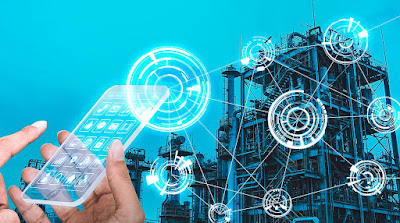The Role of IoT in Transportation Enhancing Efficiency
 |
| IoT in Transportation |
The Internet of Things (IoT) is revolutionizing various industries, and transportation is no exception. By connecting vehicles, infrastructure, and systems, IoT technologies offer solutions that improve efficiency, safety, and sustainability in transportation networks.
1.
Real-time Monitoring and Data Collection
One of the most impactful
applications of IoT
in Transportation is
real-time monitoring. IoT devices can be embedded in vehicles, roads, and
traffic signals to collect data on traffic flow, vehicle speed, and
environmental conditions. This data is sent to centralized systems for
analysis, allowing traffic managers to make informed decisions to reduce
congestion and optimize traffic flow.
For example, smart traffic lights
can adjust their timing based on real-time traffic data, reducing wait times
and improving fuel efficiency. Similarly, IoT-enabled vehicles can communicate
with each other and with infrastructure to avoid accidents, optimize routes,
and notify drivers of upcoming hazards. Real-time tracking also helps logistics
companies monitor shipments, enabling them to provide accurate delivery times
and improve customer satisfaction.
2.
Predictive Maintenance
IoT is also transforming vehicle
maintenance through predictive maintenance systems. Traditionally, maintenance
schedules were based on time or mileage, but with IoT sensors, vehicle health
can be monitored continuously. Sensors collect data on engine performance, tire
pressure, brake wear, and other critical components. When a problem is detected
or a part is wearing out, the system alerts the driver or fleet manager,
allowing for timely repairs before a failure occurs.
This approach reduces the risk of
breakdowns, extends the lifespan of vehicles, and minimizes repair costs. In
addition, predictive maintenance helps reduce downtime, which is particularly
important for public transport systems and logistics companies where vehicle
availability is critical to operations.
3.
Smart Infrastructure
IoT is not limited to vehicles—it
also plays a significant role in creating smart infrastructure. Smart roads,
bridges, and traffic systems equipped with sensors can monitor structural
health, traffic conditions, and environmental factors such as weather. These
sensors transmit data to control centers, enabling authorities to respond
quickly to issues like road damage, congestion, or accidents.
For example, smart parking systems
use sensors to monitor parking space availability, guiding drivers to open
spots, which reduces the time spent searching for parking. This not only
improves traffic flow but also reduces emissions. IoT-enabled toll collection systems
allow for seamless, contactless payments, eliminating the need for traditional
toll booths and reducing delays at toll plazas.
4.
Sustainability and Environmental Benefits
IoT in transportation also
contributes to sustainability by promoting eco-friendly practices. Real-time
data can be used to optimize routes, reducing fuel consumption and emissions.
Electric vehicle (EV) charging stations equipped with IoT technology can
provide drivers with real-time information about available charging points, ensuring
efficient use of resources.
Public transportation systems can
also benefit from IoT by monitoring passenger demand and adjusting schedules or
routes accordingly. This leads to more efficient use of public transit,
reducing the number of vehicles on the road and lowering overall emissions.
The integration of IoT in
transportation is driving significant improvements in efficiency, safety, and
sustainability. Real-time monitoring allows for better traffic management,
predictive maintenance reduces vehicle downtime, and smart infrastructure
optimizes road usage. As IoT continues to evolve, its applications in
transportation will become even more sophisticated, leading to smarter cities
and a more connected transportation network.
Get More Insights on IoT
in Transportation
Missing comfort of reading report in your local language?
Find your preferred language :


Comments
Post a Comment